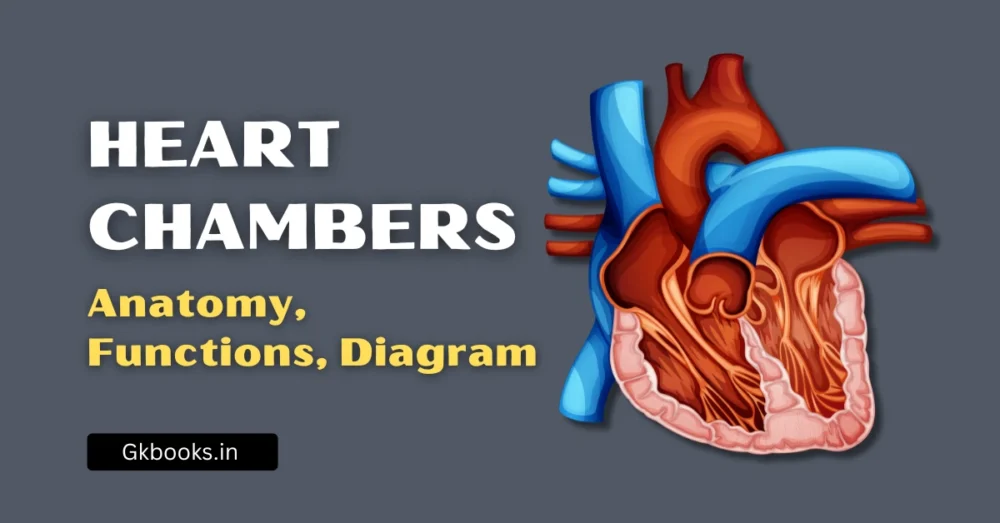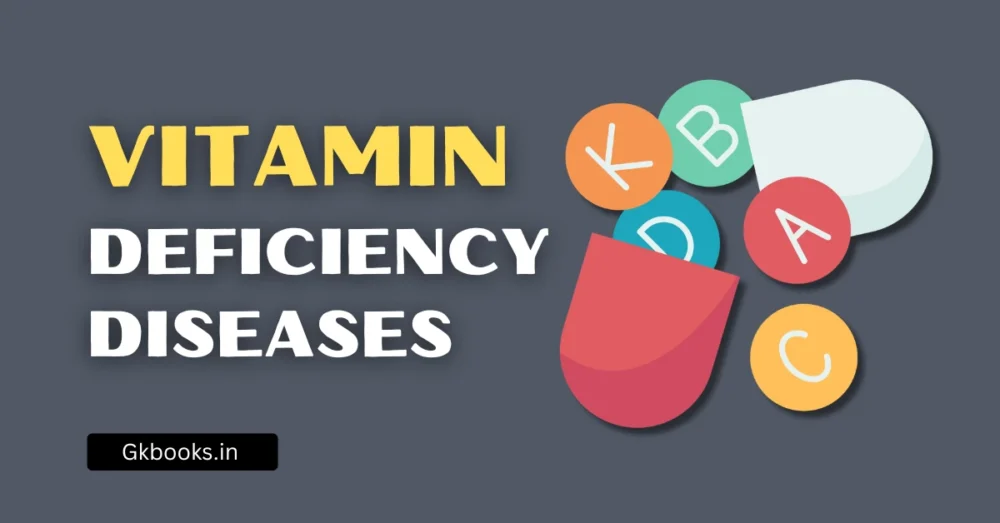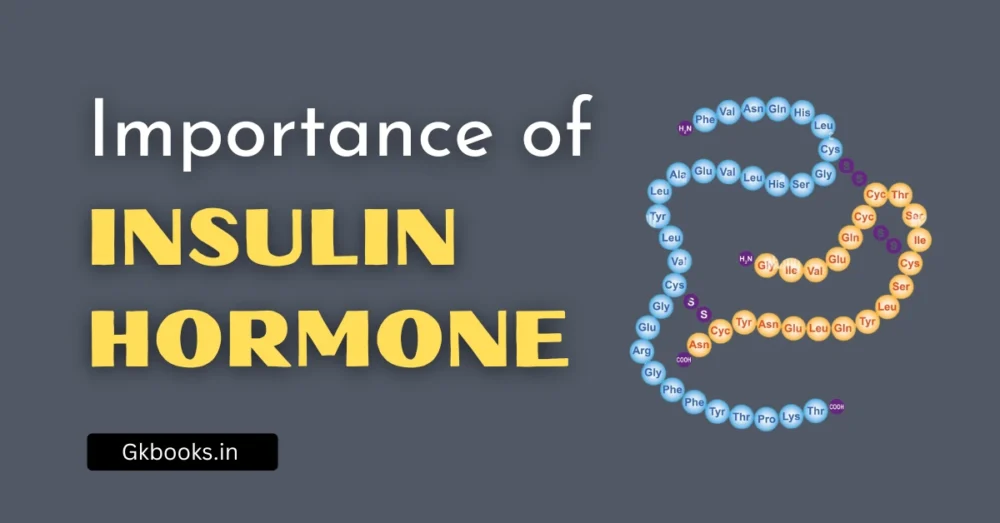Nutrients are essential elements in our food, including carbohydrates, vitamins, minerals, fats, and others. These components are vital for the survival of living organisms. While plants synthesize their food, animals, and humans rely on plants and animals directly or indirectly for their nutritional requirements.
What is Nutrition?
Ever wonder how food fuels your body and keeps you going? That’s the magic of nutrition!
In simpler terms, nutrition is all about what you eat and how it affects your health. It’s about understanding the different nutrients in food (like proteins, carbs, and vitamins) and how your body uses them for energy, growth, and repair.
Think of nutrition as the bridge between your food and your well-being! By making smart choices about what you eat, you can:
- Boost your energy levels and feel your best throughout the day.
- Maintain a healthy weight and reduce your risk of chronic diseases.
- Support your body’s natural defenses and keep yourself feeling strong.
Types of Nutrients
Imagine your body as a finely tuned machine! It needs different parts to run smoothly – that’s where macronutrients and micronutrients come in.
Macronutrients
Macronutrients are the power players that provide your body with most of its energy (calories). They come in three main types:
- Carbohydrates: Your body’s main source of quick energy, found in grains, fruits, and vegetables.
- Proteins: The building blocks for your muscles, bones, and tissues, found in meat, fish, legumes, and dairy.
- Fats: Essential for energy storage, hormone production, and brain health. Healthy fats come from sources like avocados, nuts, and olive oil.
Micronutrients
Though needed in smaller amounts, micronutrients are like the essential tools that keep your body functioning at its best. These include:
- Vitamins: Help with energy production, cell growth, and immunity. Examples include vitamins A, C, and D.
- Minerals: Support strong bones, teeth, and muscle function. Examples include calcium, iron, and potassium.
Incorporating various nutrient-rich foods from all groups provides your body with the fuel and tools it needs to thrive!
Importance of Nutrition
Food is more than calories – it’s powerful fuel for your amazing body!
Good nutrition is like giving your body high-performance gasoline. It impacts your energy levels and mood, as well as your strength, immunity, and disease risk.
Think of it like this:
- Energy: Balanced meals keep you going strong throughout the day, reducing fatigue and brain fog.
- Immunity: Proper nutrition equips your body to fight off illness and recover faster.
- Disease Prevention: Eating a healthy diet lowers your risk of chronic diseases like heart disease, diabetes, and some cancers.
The key to unlocking the power of nutrition? Variety! Aim for a rainbow on your plate by incorporating:
- Fruits and vegetables: Packed with vitamins, minerals, and fiber for overall health.
- Whole grains: Provide sustained energy and support digestion.
- Lean protein: Builds and repairs muscles and keeps you feeling full.
- Healthy fats: Essential for brain function, hormone production, and nutrient absorption.
The Six Basic Nutrients
Water
Water is an essential human body component, constituting 45-75% of our overall composition.
It performs several important functions including facilitating various bodily processes and regulating our body temperature.
Carbohydrates
Carbohydrates, commonly known as “carbs”, are the human body’s primary energy source. Blood sugar derived from carbohydrates fuels our body cells.
Carbohydrates can be in simple forms, such as sugar, which are easily digestible, or in complex forms, such as starch and fiber, which are more challenging to break down.
Although we cannot absorb fiber, it plays an important role in maintaining gut health and managing cholesterol metabolism.
Protein
Protein contains amino acids that act as building blocks for our tissues. Our body uses dietary protein to grow, repair, and maintain tissues.
Where we don’t get enough energy from carbohydrates, protein can be converted to blood glucose for energy.
Fat
Fat is one of the most energy-dense sources of nutrients, providing twice as many calories per gram as carbohydrates and protein. It also serves as a way to store extra calories for future use.
Despite these less favorable functions, fats are important for various bodily processes, including aiding digestion, acting as hormones, and providing cushioning and protection for various internal organs.
Vitamins
Vitamins are essential for the proper functioning of our body, although in lesser amounts than the nutrients mentioned above.
Each vitamin plays a unique role in our body, contributing to metabolism, growth, and immune system development, among other functions.
Minerals
Minerals like vitamins are important for the functioning of the human body. These elements in the periodic table of chemistry act as essential components of various metabolic processes and body structures.
For example, calcium is vital for bone and tooth health. Different foods contain different minerals, making a varied diet important for adequate mineral intake.
In summary, water, protein, carbohydrates, vitamins, fats, and minerals constitute the six primary nutrients required for the optimal functioning of the human body. Each plays a unique and important role in our overall well-being.
Modes of Nutrition
Nutrition is the process of acquiring and utilizing food to grow, maintain, and repair the body.
Plants obtain their food by utilizing minerals, carbon dioxide, water, and sunlight from their surroundings to produce their food.
There are two primary modes of nutrition:
Autotrophic nutrition
Autotrophic nutrition refers to the method by which plants produce their food, making them primary producers. Through the use of light, carbon dioxide, and water, plants undergo photosynthesis to synthesize their food.
Heterotrophic nutrition
Heterotrophic nutrition is the method by which animals and humans acquire their food, making them heterotrophs. They depend on plants, directly or indirectly, for their food.
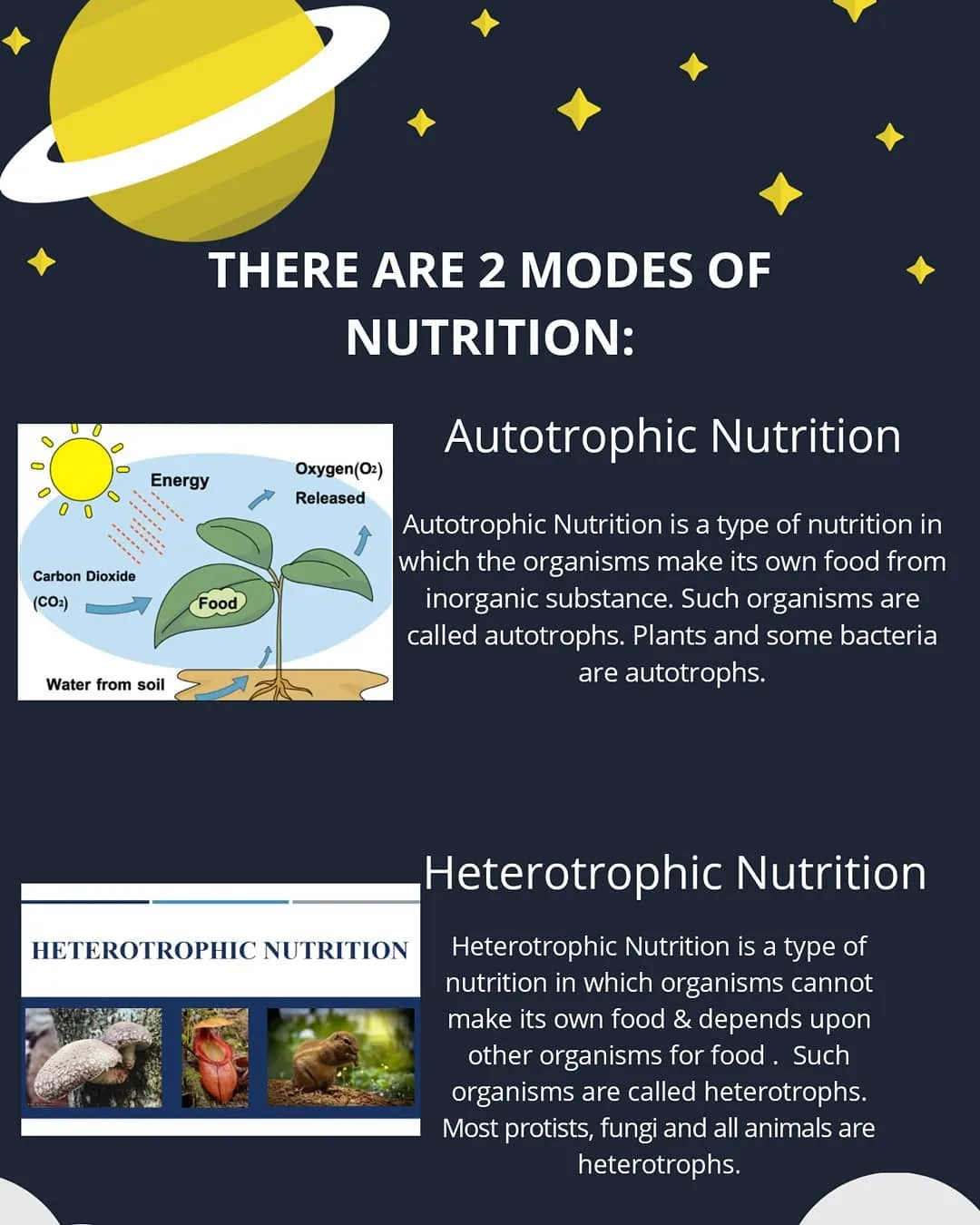
Autotrophic Nutrition
Autotrophic nutrition refers to the unique ability of plants to produce their own food. They do this by utilizing solar energy, water, and carbon dioxide through a process called photosynthesis. This results in the formation of glucose.
Autotrophs can be classified into:
Photoautotrophs
Photoautotrophs are organisms that produce their food by utilizing sunlight as their source of energy.
Examples of photoautotrophs include green plants, algae, and photosynthetic bacteria.
Chemoautotrophs
Chemoautotrophs are organisms that synthesize food through the oxidation of chemicals.
Examples of chemoautotrophs include sulfur-oxidizing bacteria, cyanobacteria, and iron-oxidizing bacteria.
Certain Characteristics of These Kinds of Organisms Include:
- Build their organic molecules using basic inorganic materials.
- They are commonly referred to as producers due to their ability to create food.
- Plants exemplify autotrophs capable of photosynthesis.
- Photosynthesis requires sunlight as a crucial component
- Inorganic compounds undergo oxidation
- Resulting in the generation of oxygen and energy in the form of glucose or carbohydrates
- Chemical Equation for Photosynthesis: 6CO2 + 6H2O → C6H12O6 + 6O2
Photosynthesis
Photosynthesis predominantly occurs within the leaves. The roots absorb water and minerals from the soil, transporting them to the leaves through specialized channels or vessels.
Carbon dioxide reaches leaves through stomata, small pores on leaves surrounded by guard cells. Chlorophyll, a green pigment in leaves, helps capture energy from sunlight to prepare their food. The process of producing food in the presence of sunlight is termed photosynthesis.
In the process of photosynthesis, water, and carbon dioxide are utilized in the presence of sunlight to generate carbohydrates and release oxygen.
Photosynthesis provides food to all living beings. Oxygen, one of the main components of life on Earth, is released by plants during photosynthesis.
Conditions Necessary for Photosynthesis
- Sunlight
- Water
- Carbon dioxide
- Chlorophyll
Steps in Photosynthesis
- Absorption of energy from sunlight
- Conversion of light energy into chemical energy
- Hydrolysis of water into oxygen and hydrogen
- Carbon dioxide is reduced to form glucose by utilizing chemical energy
Autotrophs include various organisms such as phytoplankton, algae, seaweed, grass, wheat, maize plants, blue-green algae bacteria, and cyanobacteria.
Consider the following aspects when dealing with autotrophs:
Autotrophic nutrition refers to the process by which organisms make their food.
Autotrophs are capable of making their nutrition through two methods: photosynthesis and chemosynthesis.
Photosynthesis is the process of producing food from sunlight and is primarily carried out by green plants.
The reaction involved in photosynthesis is represented as 6CO2 + 6H2O → C6H12O6 + 6O2.
On the other hand, chemosynthesis involves the use of chemicals instead of light to produce food.
Some basic facts about Photosynthesis Include:
- Plants produce their food through photosynthesis.
- Photosynthesis occurs in the chloroplasts, primarily in leaves.
- The roots absorb water and minerals from the soil and transport them to the leaves through vessels.
- Carbon dioxide enters the leaves through stomata, small pores surrounded by guard cells.
- Chlorophyll, a green pigment in leaves, captures energy from sunlight to prepare food.
- Photosynthesis uses water and carbon dioxide in the presence of sunlight to produce carbohydrates and oxygen.
- Photosynthesis is the primary source of food for all living beings.
- Oxygen, a vital component of life on Earth, is released by plants during photosynthesis.
Heterotrophic Nutrition
Heterotrophic nutrition is a type of nutrition in which organisms are unable to produce their own food and depend on other organisms to obtain the necessary nutrients.
Heterotrophs can’t make their food like green plants, so they must take all the organic substances they need to survive. Animals, certain fungi, and non-photosynthesizing plants exhibit heterotrophic nutrition.
Some plants lack chlorophyll and rely on other plants to obtain their food through heterotrophic nutrition, classifying them as parasites. Therefore, such plants are referred to as heterotrophic parasites.
Characteristics Of These Organisms Include:
Heterotrophs depend on other organisms to obtain organic molecules or food, which may be obtained from living or recently deceased organisms and non-living detritus.
As they are unable to synthesize their organic molecules, heterotrophs are categorized as consumers.
Human beings are an example of heterotrophs as they depend on plants and animals to obtain food.
Other examples of heterotrophs include herbivorous, carnivorous, and omnivorous animals such as tigers, leopards, lions, snakes, dogs, cats, fungi, parasites, and more.
Types of Heterotrophic Nutrition
Heterotrophs can be categorized into various types, primarily based on their mode of nutrition.
The following is a list of different types of heterotrophic plants:
- Parasitic
- Insectivorous
- Saprophytic
- Symbiotic
- Holozoic Nutrition
Parasitic Nutrition
Organisms acquire their food from other living organisms, acting as parasites. The host, in this relationship, gains no benefit from the parasite.
Examples include ticks, tapeworms, Cuscuta, and Cassytha.
Holozoic Nutrition
Specialized digestive systems process complex food, breaking it down into smaller pieces for absorption.
The process comprises five stages:
Ingestion, digestion, absorption, assimilation, and defecation.
Examples of organisms following this pattern include humans, carnivores, and grazing animals.
Carnivorous or insectivorous
Other plants, called carnivorous or insectivorous plants, have unique structures that help trap and digest insects to absorb the nutrients they provide.
These plants usually grow in soil that is deficient in minerals. Examples of such plants are the Pitcher plant and Venus flytrap.
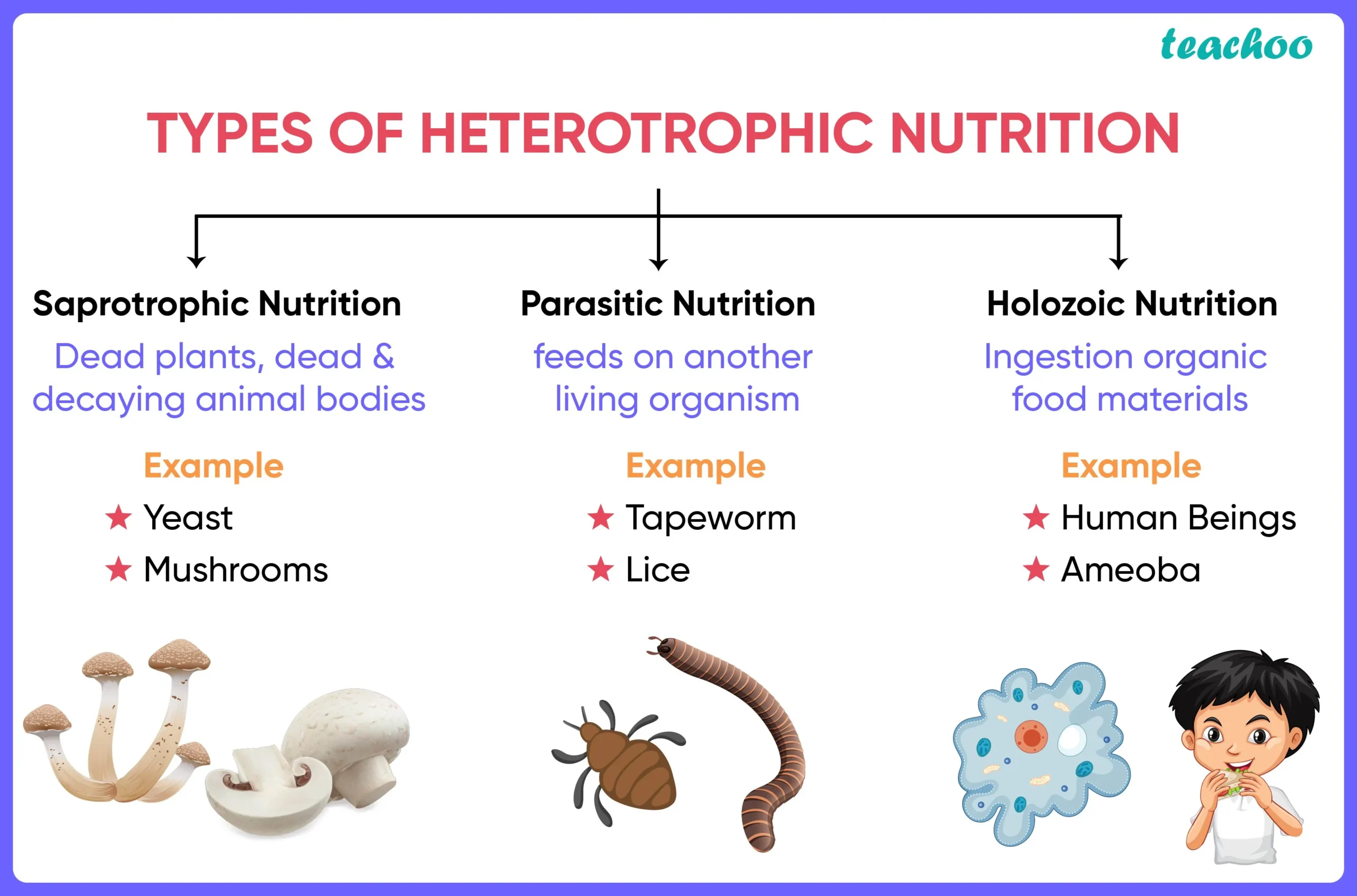
Saprophytic Nutrition
Saprophytic plants obtain their nutrition from deceased and decomposing plants and animals. They decompose the organic matter by releasing digestive enzymes and absorbing the nutrients. Examples include mushrooms and molds.
Symbiotic Nutrition
Two organisms live in close association to benefit each other, or one benefits the other while it suffers neither loss nor gain. Examples include lichens and Rhizobium in the roots of leguminous plants.
Difference Between Autotrophic and Heterotrophic Nutrition
| Feature | Autotrophic Nutrition | Heterotrophic Nutrition |
|---|---|---|
| Food Source | Produce their own food | Consume other organisms for food |
| Energy Source | Sunlight (photosynthesis) or chemical energy (chemosynthesis) | Organic compounds from other organisms |
| Organic Compounds | Synthesize carbohydrates, proteins, and lipids | Obtain them from food |
| Examples | Plants, algae, some bacteria | Animals, fungi, most bacteria, protists |
| Role in Ecosystem | Producers | Consumers, decomposers |
| Nutritional Independence | Independent | Dependent on other organisms |
| Mode of Nutrition | Self-feeding | Ingestion, absorption |
| Examples of Food | Water, carbon dioxide, sunlight | Plants, animals, dead organic matter |
| Diversity | Less diverse (limited to specific types of photosynthesis or chemosynthesis) | More diverse (adapted to various food sources) |
| Impact on Environment | Can contribute to greenhouse gas emissions (plants through respiration) | Can contribute to pollution and waste generation |
Frequently Asked Questions (FAQs)
Nutrients are essential for living organisms’ growth, development, and survival, including plants, animals, humans, and microorganisms. These nutrients serve several purposes, such as providing energy for the body’s metabolic processes, supporting proper growth and development, enhancing immunity against diseases and food deficiencies, and aiding in the repair and timely healing of damaged cells and tissues.
It is important to remember the six major types of nutrients essential for living organisms, which include water, carbohydrates, protein, fat, vitamins, and minerals. Each nutrient plays a distinct and crucial role in supporting various bodily functions.
Plants that lack chlorophyll and rely on other plants for their nutrition are classified as heterotrophic plants. These plants obtain their nutrients through various modes of heterotrophic nutrition, such as parasitic, insectivorous, saprophytic, and symbiotic. Examples of such plants include parasitic, insectivorous, symbiotic, and saprophytic plants.
Nutrients are absorbed by plants through their roots and transported via the stem to the above-ground parts of the plant, along with water.
Mixotrophs are living organisms that obtain their energy and carbon from a combination of different sources, rather than relying on a single trophic mode. An example of a mixotroph is Euglena, which can have both autotrophy and heterotrophy.
Sources:
Discover More Topics on Biology:

